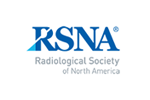Seizures and Epilepsy
A seizure is defined as transient abnormal or excessive brain activity. Epilepsy is defined as having two or more seizures at least 24 hours apart, one seizure and probability of having more seizures, or a diagnosis of epilepsy syndrome.
For new-onset seizures unrelated to trauma, CT head without contrast and MRI head without contrast are usually appropriate. MRI head without and with contrast may be appropriate.
For new-onset seizures and a history of trauma, CT head without contrast is usually appropriate. MRI head without contrast and MRI head with and without contrast may be appropriate.
For seizure disorders with unchanged signs and symptoms, CT head without contrast and MRI head without and with contrast may be appropriate.
For seizure disorders with changes in signs and symptoms of the seizure, new neurologic shortfall, or no return to previous neurologic baseline, MRI head without contrast, CT head without contrast, and MRI head without and with contrast are usually appropriate. Fluorine-18-2-fluoro-2-deoxy-D-glucose (FDG)-PET/CT brain may be appropriate.
For seizure disorders with a history of tumors, MRI head without and with contrast and MRI head without contrast are usually appropriate. CT head without contrast may be appropriate.
For individuals with known seizure disorder who are surgical candidates, MRI head without and with contrast, MRI head without contrast, and FDG-PET/CT brain are usually appropriate. MRI functional head without contrast, HMPAO single-photon emission computed tomography (SPECT) or SPECT/CT brain ictal and interictal (special molecular tests), CT head with contrast, CT head without contrast, and magnetoencephalography (measures brain magnetic fields) may be appropriate.
For more information, visit the Epilepsy page.
This page was reviewed on January 24, 2024



